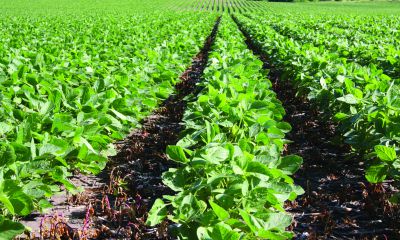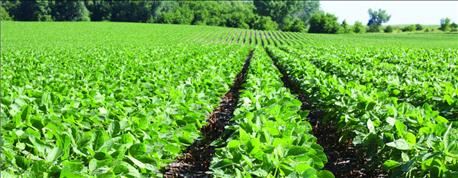August 3, 2015

With weather forecasters declaring the arrival of El Niño, what does it mean for major crops across America's heartland, namely corn and soybeans? History offers some clues, according to a new report issued at this year's Ag Media Summit in Arizona by AgriBank, the St. Paul-based Farm Credit Bank.
"No one can predict with certainty the impact El Niño or any weather patterns may have on crop production," said Jerry Lehnertz, vice president of lending at AgriBank Farm Credit Bank. "However, our analysis of historical records indicates that, with a few exceptions, El Niño is strongly correlated with positive yields for both corn and soybean crops."

GREATER YIELDS: The current weather pattern may actually create higher yields for growers in the Midwest.
How can crop producers prepare for the likely El Niño event? In its report, AgriBank says they can start by monitoring short and long-range weather forecasts. Then they can adjust their marketing and operations plans as necessary based on the forecasts, as well as ensure appropriate risk management tools are in place to protect against extreme weather conditions.
Some report highlights include:
El Niño conditions present. Above-average sea surface temperatures have been recorded this spring and summer in parts of the Pacific Ocean, and are forecasted to persist into 2016. These El Niño conditions can significantly impact U.S. weather patterns, including warmer-than-average temperatures over the western and northern United States, wetter-than-average conditions over portions of the U.S. Gulf Coast and Florida, and drier-than-average conditions in the Ohio Valley and Pacific Northwest.
Corn and soybean production mixed. In the June 30 Acreage report, the USDA National Agricultural Statistics Service estimated total U.S. planted corn acreage at 88.987 million acres, which is a 1.7 million acre decline from 2014 final planted acres and would rank in the upper 25% of planted crops since USDA started keeping records in 1926. Planted soybeans were estimated at 85.139 million acres, representing a 1.438 million acre increase compared to final 2014 data and would be the highest on record since USDA started tracking soybean planted acreage in 1960.
El Niño has impacted crops in the past. The markets are currently pricing new crop corn and soybean futures prices higher due to recent excessive wet weather in the eastern Corn Belt and southern states. However, if predictions of a moderate to strong El Niño through the second half of 2015 and into 2016 are true, then history shows that it's uncommon to have subpar national crop production results for corn and soybeans except in the few cases where very hot, dry weather occurs during the critical crop development phase in June and July. If predictions are correct, this could signal higher than expected corn and soybean yields this year.
You May Also Like




